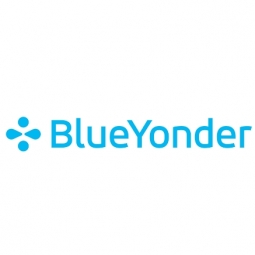Download PDF
Driving Innovation
Technology Category
- Functional Applications - Transportation Management Systems (TMS)
Applicable Industries
- Consumer Goods
Applicable Functions
- Logistics & Transportation
Use Cases
- Fleet Management
- Supply Chain Visibility
The Challenge
Kimberly-Clark, a global leader in the consumer products industry, was seeking ways to improve its transportation management process with the aim of reducing overall freight costs, improving service, and gaining efficiency. The company challenged its business support groups, including transportation, to drive additional savings across the organization. The transportation executives at Kimberly-Clark considered a number of software vendors to solve these challenges before ultimately choosing JDA Software’s Intelligent Fulfillment™ solutions. The company was looking for a solution that could provide the best optimization capabilities to drive the type of freight savings needed in the transportation organization at Kimberly-Clark.
About The Customer
Kimberly-Clark is a global leader in the consumer products industry with a 140-year history of providing high-quality family and personal care products. The company has maintained this long history of leadership through continuous improvement and innovation. It has a centralized planning staff for its North American operations that manages approximately 2,500 shipments, originating from 40 separate locations, on a daily basis. The company is committed to driving additional savings across the organization and continuously improving its transportation management process.
The Solution
Kimberly-Clark implemented JDA Software’s Intelligent Fulfillment™ solutions, including JDA® Transportation Manager, JDA® Transportation Modeler, JDA® Transportation Planner, and JDA® Enterprise Architecture. The company quickly achieved a significant return on its investment, saving an incremental $12 million to $14 million a year in freight charges, including $8 million in the first year of implementation. The company’s centralized planning staff for its North American operations uses the Transportation Management System (TMS) to manage approximately 2,500 shipments, originating from 40 separate locations, on a daily basis. Recently, Kimberly-Clark embarked on a lean initiative to extract even more value from JDA’s TMS. The company configured JDA’s enterprise architecture to incorporate a hierarchy of rules that are specific to Kimberly-Clark. These rules dictate which loads can be automatically processed, eliminating much of the manual work of reviewing and approving daily transportation loads.
Operational Impact
Quantitative Benefit
Related Case Studies.
.png)
Case Study
Improving Vending Machine Profitability with the Internet of Things (IoT)
The vending industry is undergoing a sea change, taking advantage of new technologies to go beyond just delivering snacks to creating a new retail location. Intelligent vending machines can be found in many public locations as well as company facilities, selling different types of goods and services, including even computer accessories, gold bars, tickets, and office supplies. With increasing sophistication, they may also provide time- and location-based data pertaining to sales, inventory, and customer preferences. But at the end of the day, vending machine operators know greater profitability is driven by higher sales and lower operating costs.

Case Study
Series Production with Lot-size-1 Flexibility
Nobilia manufactures customized fitted kitchens with a lot size of 1. They require maximum transparency of tracking design data and individual processing steps so that they can locate a particular piece of kitchen furniture in the sequence of processes.

Case Study
American Eagle Achieves LEED with GE LED Lighting Fixtures
American Eagle Outfitters (AEO) was in the process of building a new distribution center. The AEO facility management team decided to look at alternate options for lighting layout that could provide energy and maintenance savings. AEO would need a full-time maintenance employee just to replace burned-out fluorescent tubes.

Case Study
Revolutionizing Rodent Control
From pet- and child-safe traps, to touch-free and live-catch rodent control solutions, Victor continues to stay committed to producing superior products that meet the varying needs of today’s pest control professionals. And, with a long standing history supporting customers in the food processing, service, and retail settings, Victor knew that strict regulations were costing organizations thousands of dollars in excess overhead trying to manage their rodent-control solutions. Trap inspections in these environments are often difficult and time consuming, requiring personnel to manually check a trap’s status multiple times per day, amounting to over six hours of manual labor. Victor is looking for an innovative way to increase operational efficiencies with the use of technology.







